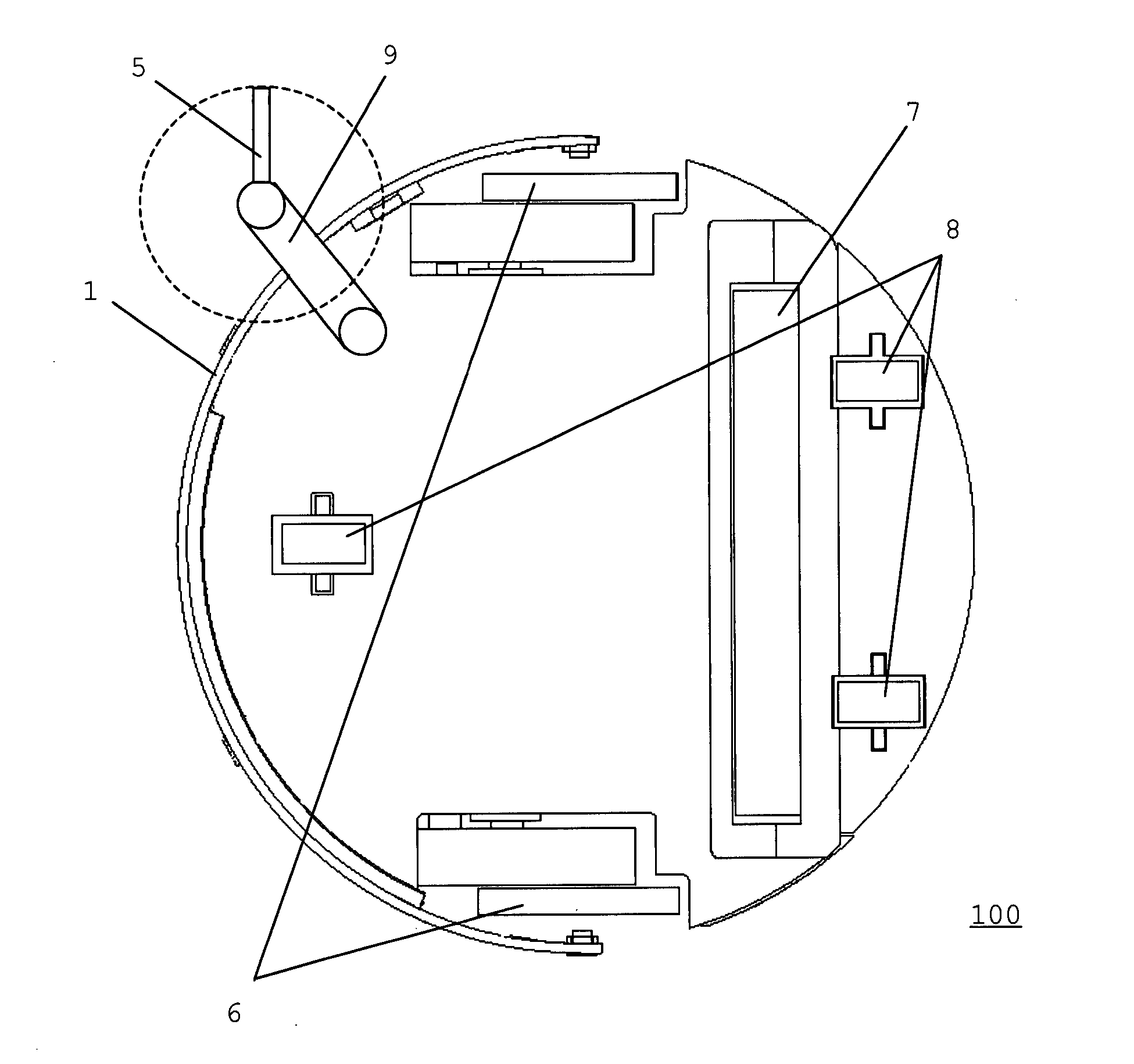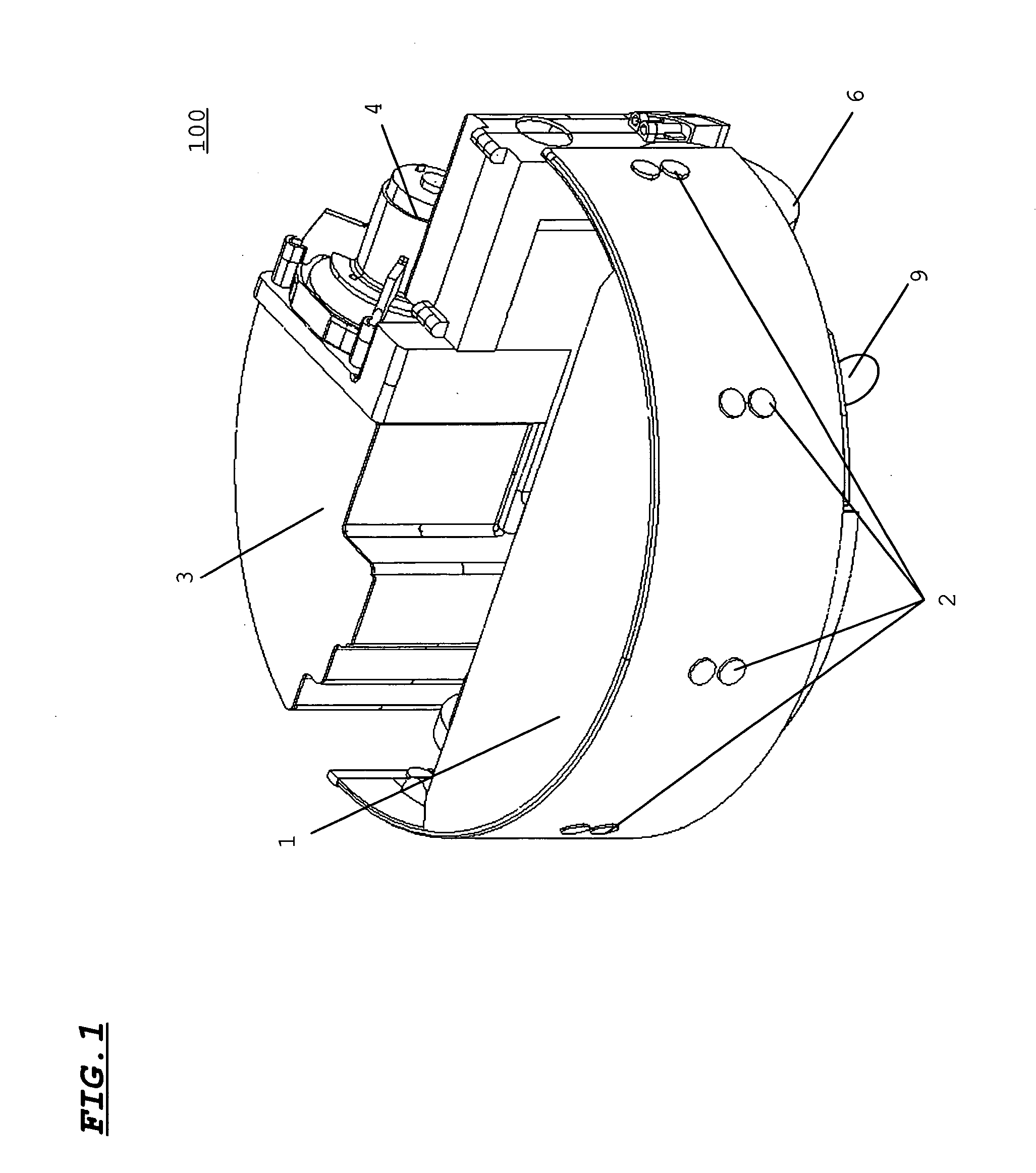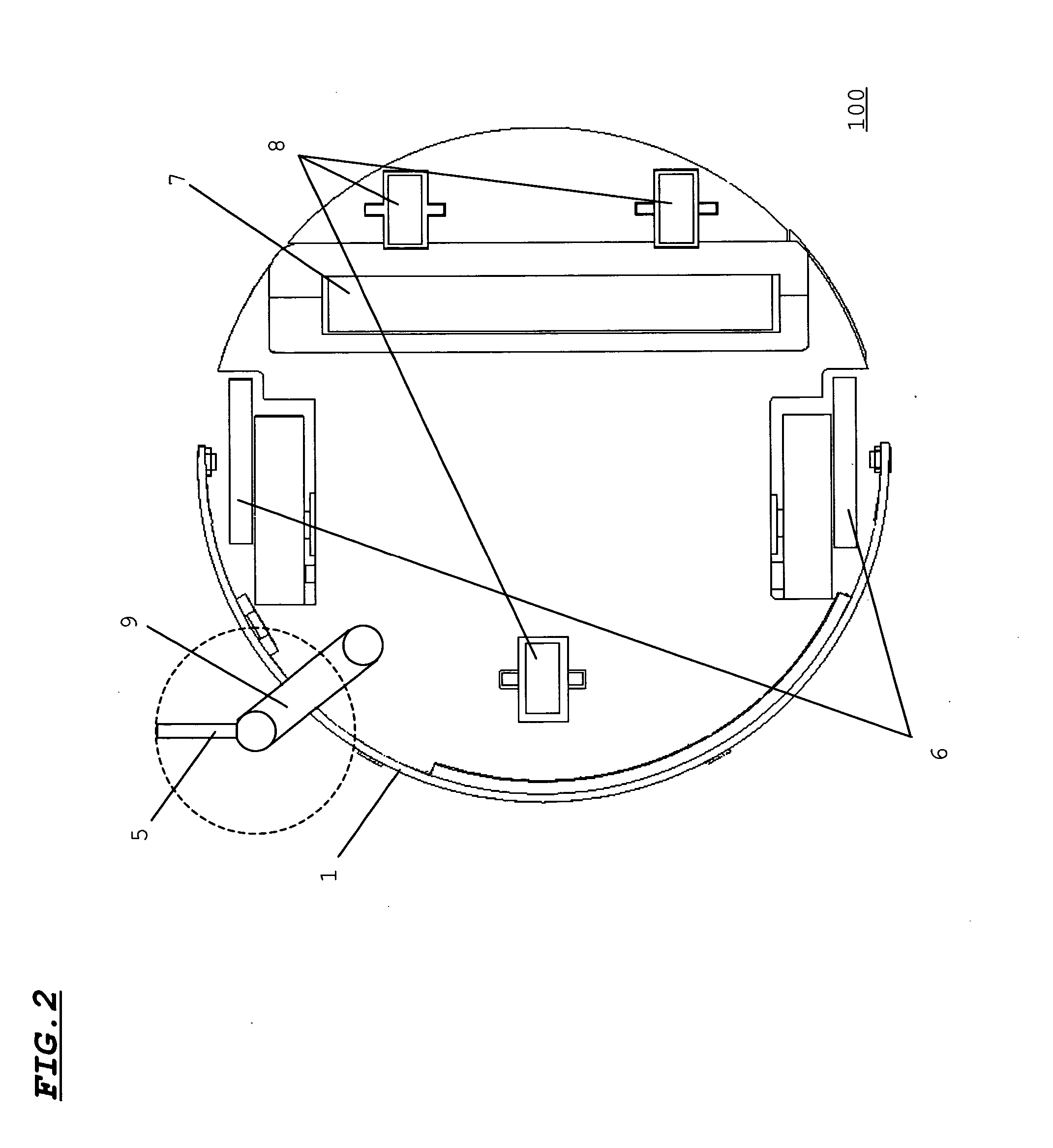Cleaner
a vacuum cleaner and self-propelled technology, applied in the field of vacuum cleaners, can solve the problems of large noise and consumption of electric power, and achieve the effects of suppressing power consumption and noise generation, preventing dust scattering from the side brush, and high dust collection property
- Summary
- Abstract
- Description
- Claims
- Application Information
AI Technical Summary
Benefits of technology
Problems solved by technology
Method used
Image
Examples
Embodiment Construction
[0035] Hereinafter, an embodiment of the present invention will be described with reference to the accompanying drawings.
[0036]FIG. 1 is a perspective view of a cleaner 100 according to an embodiment of the present invention, and FIG. 2 is a bottom view of the cleaner 100 according to the embodiment of the present invention.
[0037] Referring to FIG. 1, reference numeral 1 designates a bumper; 2, an obstacle detecting sensor; 3, a dust collecting box; and 4, a fan motor for a dust collecting operation.
[0038] The bumper 1 doubles as a contact type sensor such as a switch for detecting, when an obstacle or the like unexpectedly contacts the cleaner 100, the unexpected contact. The bumper 1 functions as a sensor for carrying out a stoppage, a back operation, or the like of the cleaner 100 when, for example, a leg or the like of someone suddenly touches the cleaner 100.
[0039] The obstacle detecting sensor 2 is a non-contact type sensor such as an ultrasonic sensor for detecting an obs...
PUM
 Login to View More
Login to View More Abstract
Description
Claims
Application Information
 Login to View More
Login to View More - R&D
- Intellectual Property
- Life Sciences
- Materials
- Tech Scout
- Unparalleled Data Quality
- Higher Quality Content
- 60% Fewer Hallucinations
Browse by: Latest US Patents, China's latest patents, Technical Efficacy Thesaurus, Application Domain, Technology Topic, Popular Technical Reports.
© 2025 PatSnap. All rights reserved.Legal|Privacy policy|Modern Slavery Act Transparency Statement|Sitemap|About US| Contact US: help@patsnap.com



